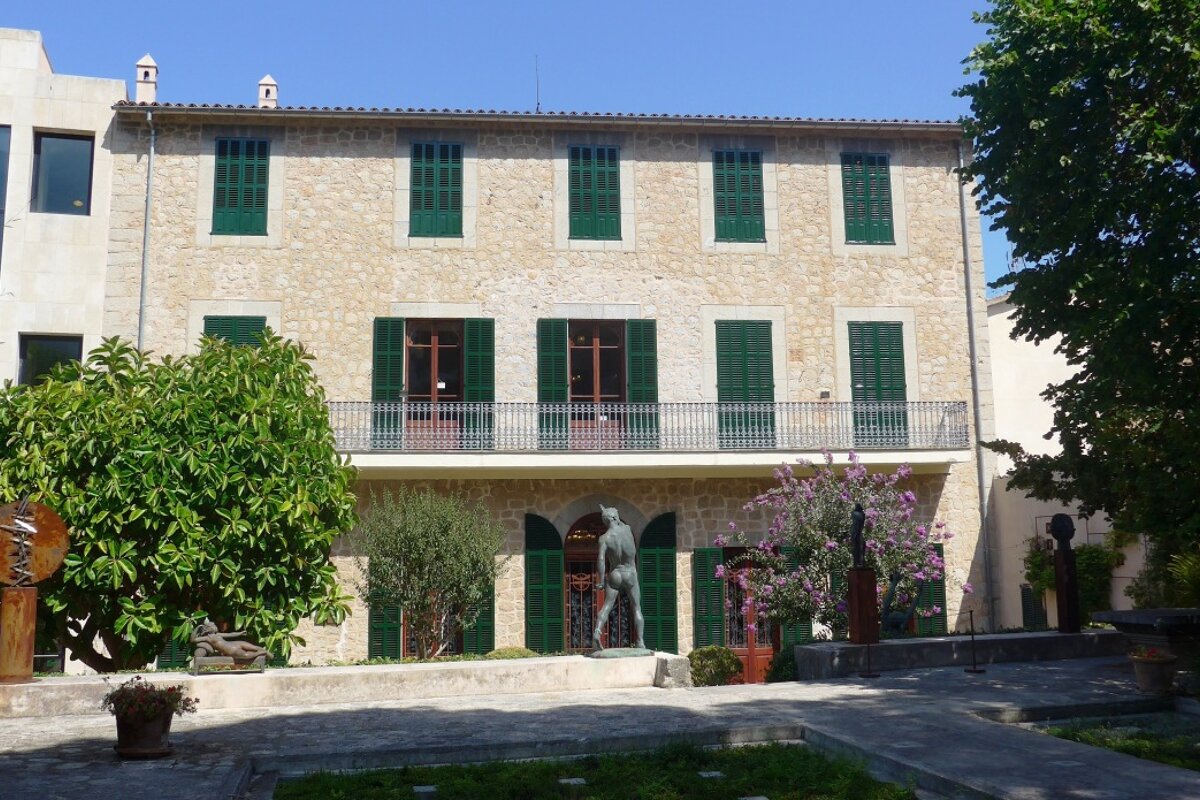
A visit to C'an Prunera Modernist Museum
Step back in time in this wonderful old Soller town house
Step off the bustling shopping street of Carrer de Sa Lluna and head inside the cool exterior of Soller's Modernist Museum. A wealth of art and an insight into the lifestyle of the rich in early 20th century Mallorca awaits you.
You can't miss it. C'an Prunera Museum's striking façade stands out besides its plain neighbours. This was precisely Joan Magraner Oliver's intention when he commissioned it. Magraner was one of many local merchants who emigrated to France when a terrible plague killed off the famous Soller oranges in 1865 leaving the valley in crisis. When the merchants began to return to their hometown at the turn of the century, it was with a desire to prove how well they had done. Judging by the imposing doorway, elaborate wrought iron balconies and decorative stonework, Magraner had done very well indeed.

Magraner's town house was completed in 1911 and manifests the influence of Art Nouveau that was popular in France. In Spain the same movement is referred to as Modernism. It was brought to the island by Lluis Domenech y Muntaner, who designed the Grand Hotel in Palma. Who exactly built C'an Prunera remains a mystery. Some believe it was designed by Gaudí's apprentice, Joan Rubio y Bellver. The Catalan architect created the façade of Saint Bartholomew's church and that of the Bank of Soller. Both these buildings can be found in the main square, Plaça de la Constituciò, a short stroll away from the museum.
Inside C'an Prunera, high ceilings, tall windows and a beautiful marble spiral staircase present a vision of grandeur. The main floor and first floor contain original furniture from the modernist era, arranged as it would have once been. There are bedrooms, living rooms and dining rooms. Vintage glass chandeliers hang from the ceilings and the walls are lined with oil paintings of landscapes and still lifes, as well as decorative ceramic dishes. Bronze sculptures and stained glass tiffany lamps are mounted on plinths and side tables. Despite visiting in high season, I found the museum to be wonderfully empty which made it easier to appreciate and imagine it as once being a family home.

Lovers of Gaudí will certainly find something to admire in this house. The geometry of the natural world is abundant and there is such attention to detail. Dragonflies are carved into the shutters of the elegant windows, the painted ceilings and cornices rich with plant motifs. If you love decorative floor tiles, you will enjoy crossing each room and discovering a different intricate design.
I was fascinated by the large collection of dolls. Many were from the 1920s and 30s, but a couple were from as far back as the 1890s. I'm sure I'm not the only one to find old dolls creepy, yet at the same time they are so compelling. Many look like ornaments. Did children really play with them? I get caught up trying to imagine the solemn creations as toys.
The museums main attraction is the Serra Collection, a permanent exhibition which includes prominent works of art from the 19th and 20th century. Santiago Rusiñol, Miquel Barcelò, Joaquim Mir and Henri Toulouse-Lautrec are just some of the big names. Behind a glass cabinet in the library there are some wonderful pieces by Joan Mirò, so vibrant and bright they look like there were painted yesterday. The works of Juli Ramis, a local artist and pioneer of abstract painting in Spain, is also part of the permanent collection. In the basement which would have once housed the servants’ quarters and the cellar, three white-washed rooms are dedicated to his career.
Time magazine once named Ramis among the top 100 most important painters in the world. It was interesting to see his work evolve and once again I felt lucky to have so much of the gallery to myself. On the other side of the spacious basement, the walls are given over to temporary modern art exhibitions.
My tour of the museum ended in the tranquil garden and a view of the back of the house. From this angle the building looks a lot more like a traditional Mallorcan townhouse. The well-pruned bushes lead on to a less manicured area and the leafy awnings offer welcome shade. The garden contains contemporary installations as well as traditional figure sculptures.

A friendly bunny rabbit appeared with a mishmash coat of different layers of fur that I decided was abstract and therefore well-suited to the museum. I took a moment to stand in the sunshine and admire the building that housed so much talent. The €5 entrance fee for the Can Prunera museum seems very reasonable for such a generous collection and I'll be sure to visit again soon.
For more from Emily visit her blog

































